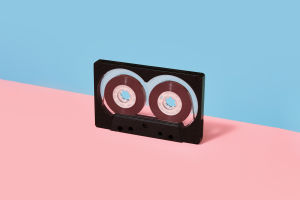Hey Lykkers! The stethoscope is an iconic medical tool that has become synonymous with healthcare professionals. Invented in the early 19th century, it is used to listen to the internal sounds of the body, particularly in the chest, heart, and lungs.
Despite its simple design, the stethoscope remains an essential tool in modern medicine, allowing doctors and nurses to assess patients’ conditions quickly and efficiently.
Parts of a Stethoscope
Chest Piece
The chest piece, or head, of the stethoscope is the part that comes into contact with the patient’s body. It typically has two sides: the diaphragm and the bell. The diaphragm is used for listening to high-pitched sounds like heartbeats and lung sounds, while the bell is more sensitive to lower-frequency sounds, such as abnormal heart murmurs.
Tubing
The tubing is a flexible, hollow component that transmits sound from the chest piece to the earpieces. High-quality stethoscopes have thick, durable tubing that minimizes outside noise interference.
Earpieces
The earpieces are the parts that go into the healthcare provider's ears. They should fit snugly to prevent outside sounds from interfering with the body sounds being heard through the stethoscope.
How to Use a Stethoscope
Step 1: Proper Positioning
Before using the stethoscope, make sure the earpieces are positioned correctly. The earpieces should face slightly forward, toward the nose, to align with the ear canal. This ensures clear transmission of sound.
Step 2: Choosing the Right Side
Depending on the sound you want to listen to, choose between the diaphragm and the bell. Use the diaphragm for high-pitched sounds like heartbeats and normal lung sounds, while the bell is better suited for low-pitched sounds, such as abnormal heart sounds.
Step 3: Listening to Heart Sounds
Place the diaphragm on the chest, just below the left nipple, to listen to the heart. The stethoscope allows you to hear the lub-dub sound, which is the heart’s normal rhythm. Any irregularities in this rhythm, such as murmurs or extra beats, can indicate underlying heart conditions.
Step 4: Listening to Lung Sounds
When listening to the lungs, place the stethoscope on the patient’s back, moving the chest piece to various spots to cover both lungs. The breath sounds should be clear and consistent. Any wheezing, crackles, or absence of sound may indicate conditions such as asthma, pneumonia, or fluid in the lungs.
Step 5: Listening to Blood Pressure
In combination with a blood pressure cuff, the stethoscope is used to measure blood pressure. Place the diaphragm of the stethoscope over the brachial artery (on the inside of the elbow) while inflating the cuff. As you release the air, listen for the Korotkoff sounds, which indicate systolic and diastolic blood pressure levels.
Specialized Uses of Stethoscopes
In addition to basic functions, stethoscopes have specialized uses. Pediatric stethoscopes, for example, are designed for smaller bodies, while cardiology stethoscopes provide more precise heart sound detection. Some stethoscopes are electronic, amplifying sounds to make diagnosis easier in noisy environments.
The stethoscope is more than just a medical tool; it’s a vital instrument that offers insight into the inner workings of the human body. No matter used to detect heart murmurs, lung issues, or monitor blood pressure, its versatility makes it an essential device for healthcare professionals. Learning how to use it effectively is crucial in ensuring accurate diagnoses and patient care.


